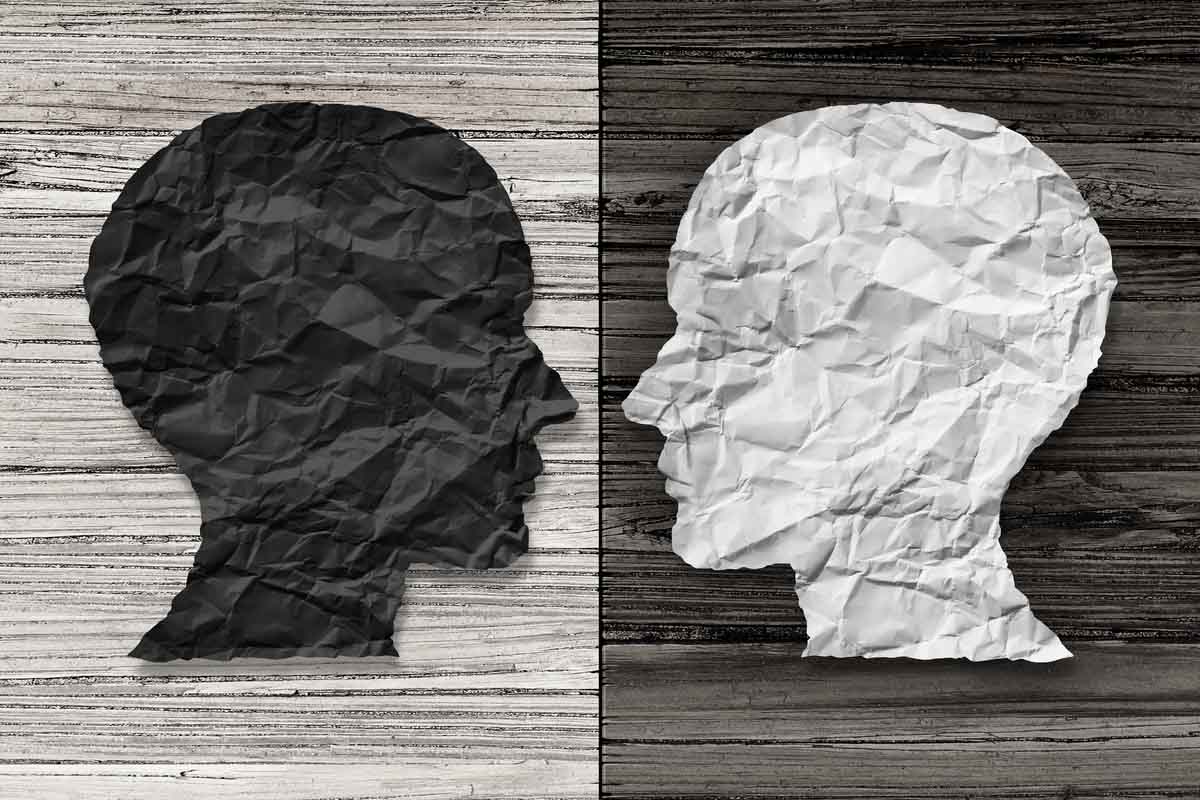
Have you ever noticed that whatever or whoever you become infatuated with, or philic to, you fantasize about the gain of and fear about the loss of? And that whatever or whoever you become resentful to, or phobic to, you fear about the gain of and fantasize about the loss of?
Have you ever also noticed that whatever or whoever you are infatuated with (intelligence), you resent its contrasting opposite (unintelligence)? And whatever or whoever you are resentful to (bitter-putrid), you are infatuated with its contrasting opposite (sweet-fragrant)?
Your evolutionary earlier paleocortex or deep subcortical brain once used such oppositional contrasts to make quick survival-based decisions to impulsively seek prey or instinctively avoid predators. Many of your decisions today are still being based upon such basic polar opposites.

If you consciously seek one pole, you will unconsciously avoid its antipodal opposite. This is due to a basic principle of brain associations commonly referred to as the Law of Contrast. The more extreme you perceive the one pole to be, the more extreme you will perceive the other counterbalancing pole to be.
The law of contrast is one of the fundamental principles of brain association, and the relationship between such contrasting polar opposites is known as opposition. The knowledge of these basic pairs of opposites and their inseparable unity dates back to at least the time of the pre-Socratic Greek philosopher Heraclitus—if not way before.
As your brain’s subcortical amygdala assigns positive or negative valency to one perceptual pole, it simultaneously assigns the opposite negative or positive valency to the other. Then both are stored in your brain’s hippocampus for subsequent use for decision making during future emergencies or life survival moments. This storage mechanism has been sometimes called your subconscious mind.
The Law of Contrast was also one of the three Aristotelian laws of associative learning, which were the seeds from which the beginnings of psychology can be traced. The other two were the Law of Contiguity (past-future) and the Law of Similarities (tea-coffee). These Laws of Association partly explain how you learn and remember things for the sake of evolutionary survival and quick decision making.
The Law of Contrast is founded on the assumption that individuals base much of their heuristics and general behavior on comparison of complementary opposites. The Law of Contrast states that the perception or thought of something is highly likely to trigger the thought of its direct or complementary opposite.

The Law of Contrast states that opposites are simultaneous reminders of one another. Here are a few examples. Perceiving or thinking about. . .
. . . hot tends to bring to mind cold and vice versa.
. . . happy tends to bring to mind sad and vice versa.
. . . positive tends to bring to mind negative and vice versa.
. . . pleasure tends to bring to mind pain and vice versa.
. . . kind tends to bring to mind cruel and vice versa.
. . . fantasy tends to bring to mind nightmare and vice versa.
. . . beauty tends to bring to mind ugly and vice versa.
. . . comedy tends to bring to mind tragedy and vice versa.
. . . philia tends to bring to mind phobia and vice versa.
. . . success tends to bring to mind failure and vice versa.
As is true with a magnet, the two illusive poles are actually and mentally inseparable. If you try to cut the magnet in half and access only one of its so-called two poles, the one pole becomes illusive, for the halved magnet has once again two inseparable poles. Regardless of how many times you halve the magnet, the two resultant smaller magnets still remain with two poles. Monopoles do not emerge.
Although your subcortical, subconscious, subjective mind may foolishly attempt to separate the inseparables, divide the indivisibles, label the “unlabelables,” polarize the “unpolarizables” or name the “ineffables,” your cortical, superconscious, objective mind intuitively and reasonably knows you can’t. It has full consciousness of the two poles at once and is mindful of the conscious and unconscious split. Instead of perceiving either positive or negative poles, it more wisely apperceives neither positive nor negative poles, but simply the simultaneous whole.

Your philia is inseparable from your phobia and your phobia is inseparable from your philia. All pairs of complementary opposites in the mind are likened to quantum particles and their complementary opposite, non-locally entangled antiparticles.
When your perceiving or thinking of one pole is seemingly separated from and sequential to the other, you experience a polarized emotion—either joy or sorrow, happy or sad, or attraction or repulsion. You have divided your full consciousness up and separated your conscious from your unconscious and futilely attempted to seek the one and avoid the other.
When your perceiving or thinking of one pole is simultaneous with the other, you have a synthesis of complementary opposite emotions and you experience a transcendent metadoxical feeling—love. You have wisely integrated your conscious and unconscious into a superconscious or superpositional awareness.

When you are living in accordance with your true highest values, your medial prefrontal cortex, or executive center, receives blood, glucose and oxygen and you become more objective, superconscious, and resiliently neutral. This awakens your Systems 2 Thinking and allows you to think before you feel and wisely and lovingly act before you foolishly and emotionally react.
When you are attempting to live in accordance with your lower values, your subcortical amygdala, or desire center, receives blood, glucose and oxygen and you become more subjectively biased and subconsciously and non-resiliently polarized. This awakens your Systems I Thinking and allows you to impulsively or instinctively feel before you think and foolishly and emotionally react before you wisely and lovingly act.
It is in this latter case that you subjectively bias your interpretation of reality and attempt to strive for that which is unavailable and attempt to avoid that which is unavoidable. This is the source of much of your potential futility and “suffering” and the source of the disempowering division of your conscious and unconscious minds.

As long as you are infatuated with seeking success and happiness, you will fear their loss and also simultaneously fear the gain of their opposite—failure and sadness. The more extreme the one becomes, the more extreme the other becomes. This will become the source of much distress. Distress is the inability to adapt to a changing environment due to such polarities and separations. A neutrally perceiving mind has no fear of loss or gain, of success or failure.
The more polarized you are, the more philias and phobias you breed and the more the Law of Contrast can become the source of your many potential distractions and frustrations. But if you intuitively integrate the pairs of opposites simultaneously, you can awaken from within a profoundly empowered state of centered and poised love and wisdom. It is in this state that leaders effectively manage wisely the many pairs of opposites they face within and around them.

